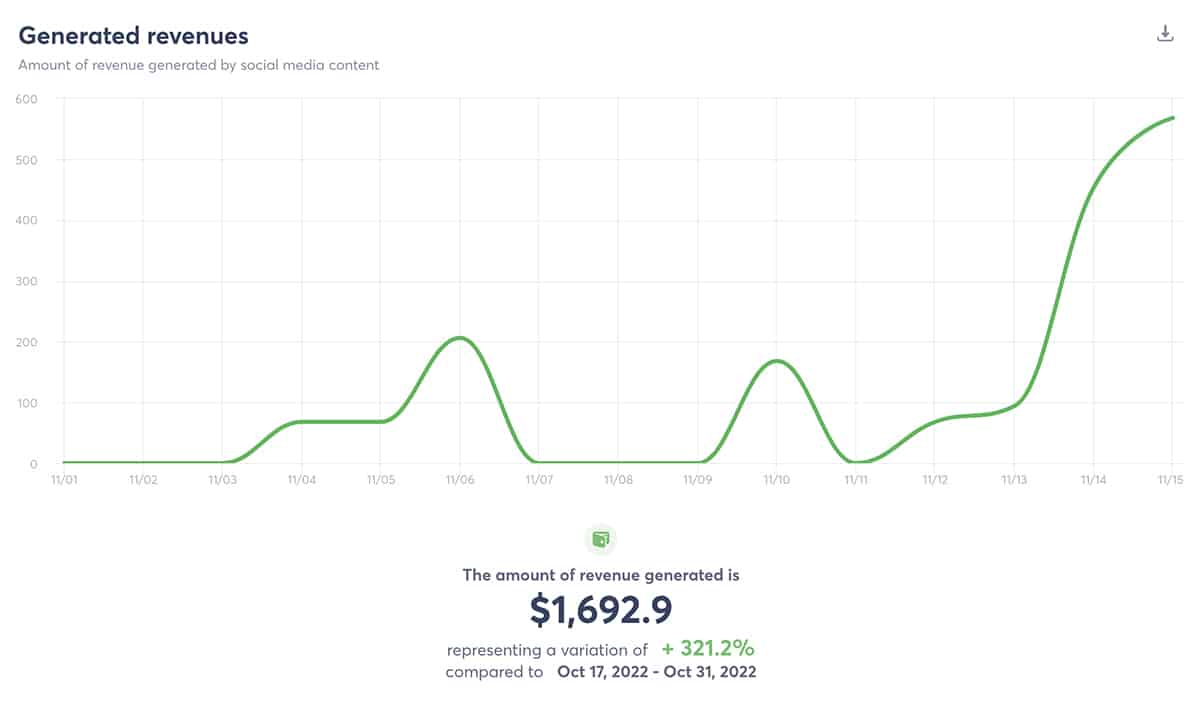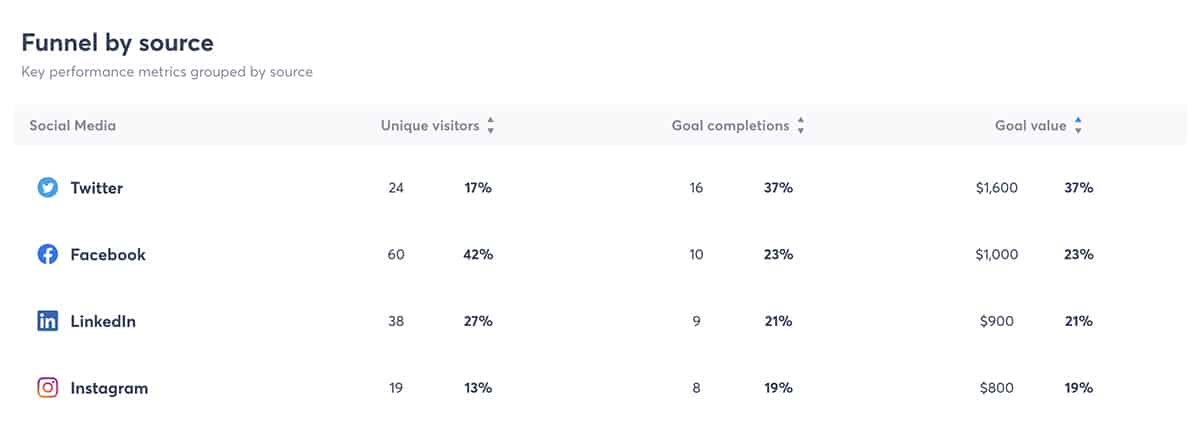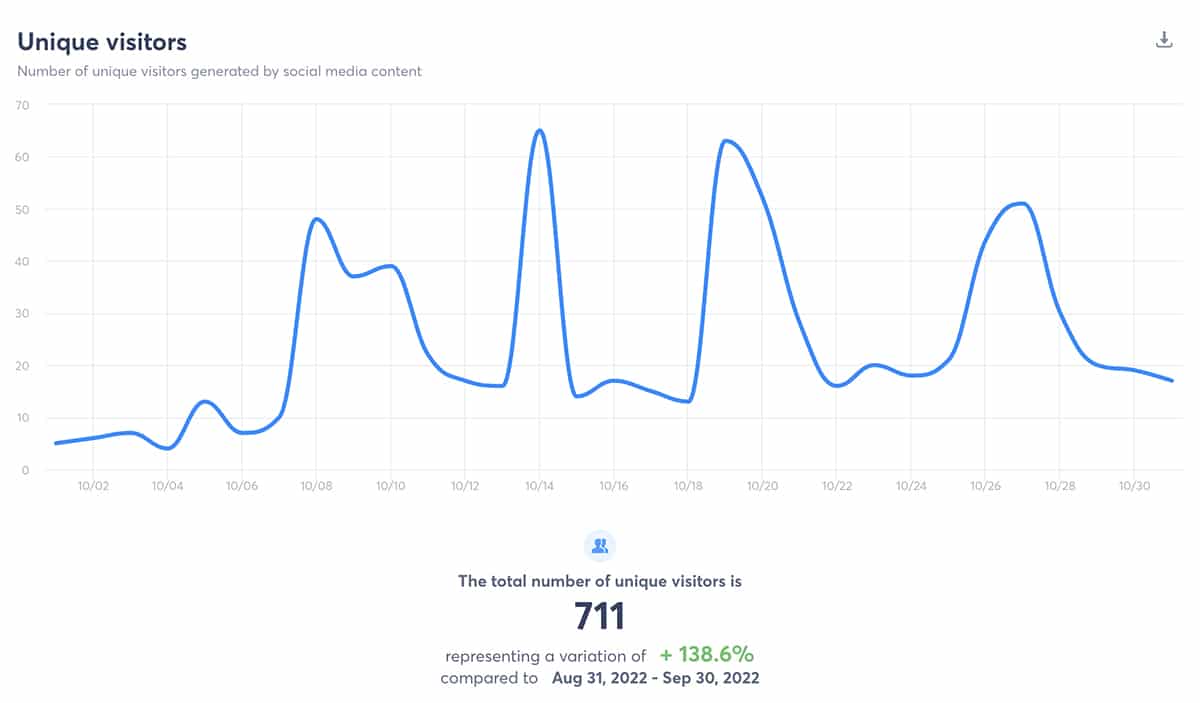As marketers, we typically refer to what we do as social media marketing. But is social media really a marketing channel?
Can it generate measurable conversions and sales? Or is it more of a space for community building and engagement?
In this article, we’ll explore both sides of this great debate. We’ll consider the concept that social media is in fact a powerful channel for driving full-funnel results and the argument that without proof of ROI, social media is merely a space for branded communication and community building.
If you’d rather listen to this discussion, tune into the webinar hosted by Agorapulse CMO Darryl Praill. This article recaps insights from The Great Debate: Is Social Media a Marketing Channel, or Not? including takeaways from panelists.
How Can You Prove That Social Media Marketing Matters?
Whether you’re a social media manager who wants to prove the value of your work or you’re a CMO who needs to make a compelling budget request, you have to align your work with your organization’s business goals.
In other words, you need to understand what stakeholders aim to achieve and how they measure outcomes.
In most cases, revenue is the ultimate goal. So if your colleagues or stakeholders have questioned whether social media is really marketing, often what they actually want to know is how important social media is for revenue generation.
A common issue for marketers is that organic social media doesn’t always drive revenue directly. As a result, it’s crucial to know how organic social contributes to revenue generation so you can measure value across your brand’s accounts.
Below, we’ll look at different ways to think about social media in the context of marketing, sales, and measurement—so you can gain a new perspective on the conversation and ensure you have a seat at the table.
Social Media for Marketing vs. Community
Is organic social media a broadcast channel that can target customers with marketing campaigns at every funnel stage? Or is it better suited as an engagement channel that aims to improve awareness and support the customer community?
Social media as a full-funnel marketing channel
Many people—including some of your stakeholders—believe that social media only works for upper-funnel goals like awareness, engagement, and content distribution. Troy Sandidge, Founder of Strategy Hackers and COO at No Middle, disagrees.
He explains that social media can achieve all those upper-funnel goals. Yet it can also target lower-funnel goals like lead generation, lead nurturing, and conversions. Troy considers organic social “a Swiss army knife for marketing and sales.”
According to Troy, broadcast marketing has an average conversion rate of around 2-5%. In contrast, organic conversion rates tend to be much higher. He attributes the difference to the human element that social media brings to the table.
As Troy explains, paid campaigns can introduce customers to a brand, but organic marketing keeps them there. As a result, organic social media is much more successful at retaining customers.
While social media might be known mainly as an engagement channel, savvy marketers can use this aspect to their advantage. In some cases, you can use engagement to drive conversions.
Think about it this way. Paid channels create one-way broadcasts, not two-way communication.
In contrast, organic social media creates conversations and encourages prospects and customers to participate. In addition to cultivating a community, organic social creates opportunities for customers to buy again and again (and again).
If your stakeholders believe that organic isn’t working, Troy suggests that your team might not have the tools or data necessary to tie social media marketing results back to key performance indicators (KPIs) and key business goals.
One way to address this valid concern is to calculate and assign a value to upper-funnel metrics like impressions, engagement, and link clicks. Then when you prepare social media reports for your executive team, you can share values for all the metrics you track.
You can certainly calculate these numbers manually. But Agorapulse can help with tracking values for Facebook engagement. Using Agorapulse, you can input custom values for impressions, link clicks, and engaged fans. The reporting dashboard will automatically display ROI for your page.
Social Media ROI Ebook: Download a FREE Guide to Proving Social Media ROI
Social media as a channel for community
Christopher Penn, Co-Founder and Chief Data Scientist at TrustInsights.ai, argues that for the average brand, organic conversion rates are closer to .01%. Given this low number, he states that social media is better suited as a channel for awareness and engagement.
But does it really make sense to think of social media as one unified marketing channel? Think about all the different social networks your brand uses and the various goals, metrics, and outcomes associated with each one.
Christopher explains that social networks are so different from one another that it’s impossible to make a definitive statement about whether organic social media drives conversions. Some networks are designed for conversions, while others aren’t.
Juntae DeLane, Founder and Chief Strategist at Digital Delane, suggests that the problem has two sides. Not only are conversions incredibly difficult to measure on social media, but many brands also focus too much on vanity metrics.
In other words, brands often measure success via metrics that don’t have a defined value. Juntae explains that upper-funnel metrics such as likes can give marketers helpful cues about what the audience wants to see. Yet consistently measuring the value of those interactions across channels isn’t easy.
As marketers, we also have to account for dark social. Although dark social tends to drive a ton of traffic and conversions from social media, these results are tough to attribute to a channel or campaign.
Darryl confirms that measuring social media can be challenging, but having the right tools helps. For example, some marketers still aren’t using UTM codes or haven’t made these tracking tools a standard part of their process.
With UTM codes, you can learn a lot about how much traffic and how many conversions your social channels and content are generating. Using that data, you can start to quantify the value of your work beyond vanity metrics.
For example, you can add UTM codes to any links you publish or schedule from the Agorapulse post composer. Then you can track the results from the Agorapulse ROI dashboard and from external tools like Google Analytics.
Social Media for Sales vs. Engagement
Can social media successfully drive sales—and can marketers easily track related revenue? Or is social media better for community-related goals like support and education?
Social media as a sales channel
Have you ever made a purchase from a brand you follow on social media? For most social media users, the response is overwhelmingly affirmative.
So while organic social media can be excellent for community building, Meg Ugenti, Corporate Director of Sales & Marketing for Focus USA, suggests that it’s also effective at driving conversions.
However, Meg cautions that business type and sales cycles can affect how well organic social media works at driving conversions. Let’s look at two examples.
Companies with short sales cycles—such as retail or restaurants—have a much better chance at driving direct sales and conversions. Customers might see a product or a menu on social media and purchase immediately.
Businesses with long sales cycles—such as B2B companies—might have a tougher time driving sales and revenue directly from social media. Most customer journeys tend to include far more touch points.
However, B2B businesses have one major advantage. Many of these companies post plenty of branded content to their company pages, but they don’t stop there.
In addition, their sales reps are often active on social media, creating additional B2B content and touch points for prospects. Meg explains that 78% of B2B businesses with sales teams that are active on social media are outperforming their peers.
Both B2B and B2C businesses that lean into organic social media can create additional opportunities for marketing. For example, companies that succeed on social media can leverage influencer marketing and seek out champions, ultimately driving more sales.
Champions and loyal customer are prime candidates for sales on social media. Meg explains: “This is a built-in audience for you to provide your products and services. Of course they’re going to be engaging and converting if you’re giving them what they want when they want it.“
Despite all these opportunities, Meg suggests that a common reason businesses aren’t seeing conversions from social media is that they aren’t measuring sales reliably. So what do you need to measure results on social media?
Customer relationship management (CRM) tools can help you track customer touch points, including DMs, website visits, and lead magnet downloads. Along the same lines, UTM codes can help you track traffic and transactions from social media.
If you add UTM codes in Agorapulse, you can easily track organic social media campaigns across channels. Our social ROI dashboard automatically calculates traffic, transactions, and revenue so you can quantify the value of your work.
Social media as an engagement channel
Does the average business really need organic social media to drive sales? Christopher argues that Apple, one of the top companies in the world, doesn’t have an organic social presence. Instead, the company has focused its sales efforts elsewhere.
He suggests that the reason some top retailers don’t use organic social is because it doesn’t really work for sales. Instead, organic social media works much better for engagement, awareness, and support.
As Christopher explains: “Social media isn’t a marketing channel because marketing channels function best in the marketing part of the customer journey.” In other words, if organic social doesn’t drive sales results, it can’t be a sales channel.
Lauren Teague, Founder at FanWagn, cautions marketers to remember that they don’t have control over organic social reach. Each platform determines reach—or delivery rate—and algorithms can change at any time.
Lauren explains: “The platform decides your deliverability unless you pay for it, which automatically takes organic social media out of the marketing bucket.” So are paid campaigns the only option for driving sales on social media? Not necessarily.
When considering whether social media can be an effective sales channel, Lauren encourages marketers to think about organic social more as an assistant and less as a direct driver. It’s also crucial to know what your stakeholders expect from social.
For example, when Lauren and her team ran social media for the PGA, organic social was never viewed as a sales channel. Revenue came from ad contracts and marketing partners, not individual viewers.
As a result, her team used social for awareness and community building. Lauren explains that “marketing drives attention and builds affinity,” which can be essential for generating buzz, attracting a community, and driving engagement metrics like views.
Even if you don’t consider organic social to be a key revenue driver, monitoring sales data can help you understand what kind of results this channel is driving. Whether or not you track every social media post you publish, Agorapulse’s ROI dashboard automatically monitors revenue across social media and attributes it to relevant conversion channels.
Social Media Measurement
How easy is it to measure the value from your social media efforts? Do social media metrics offer enough insight that they can successfully provide strategic value?
Organic social as an ROI measurement
Marketers can certainly measure organic social results. But the value they find always depends on what they measure.
Amanda Robinson, Founder and CEO at The Digital Gal, suggests that many marketers set the wrong expectations around organic social measurement. Since you can’t always attribute sales to a single marketing activity, you have to measure various touch points.
In some cases, it’s a volume measurement. Amanda explains that organic social has a lot of ebbs and flows. The more you put effort into organic social, the more you’ll see a lift in engagement, video views, traffic, and other metrics that matter.
The key is knowing what you need to measure and paying attention to those numbers. If you aren’t sure about either of these elements, Troy suggests getting together with leadership and reconfirming goals throughout the funnel.
When you’re on the same page with your executive team, you can make sure to share the data that matters most to them. In most cases, that will include revenue and conversions. It might also include website traffic and social engagement—both of which create upper-funnel touch points.
Organic social as a transactional channel
For Christopher, one of the biggest issues with measuring organic social results is that metrics aren’t standardized across channels. In theory, many social media channels monitor the same metrics—such as impressions or video views.
But in reality, the definition of each metric isn’t the same from channel to channel. For example, Facebook and YouTube have completely different parameters for video views.
As a result, Christopher argues that rather than calling social media one unified channel, marketers should consider each platform its own channel. With this approach, marketers can get a better handle on metrics and use measurements to refine their approach for each platform.
As you refine your organization’s measurement strategy, keep these differences in mind. Some social networks are much more transactional than others, which means they’re more likely to create revenue-positive touch points. Using UTMs and campaign tracking can be particularly helpful for measuring and optimizing these channels.
Yet social media isn’t always transactional. If you’re overseeing channels and campaigns that don’t drive much direct revenue, pay attention to how you measure results and optimize efforts.
There’s not necessarily a wrong way to optimize, as long as you check a couple of important boxes. Make sure you’re intentional about measurement, and optimize for a goal that contributes to business goals.
Darryl recommends that CMOs have a plan and a tech stack so they can collect data consistently. From there, you can decide how best to allocate budget for organic social—whether that’s for sales-driven promotions, community building, influencer marketing, or other efforts.
Agorapulse’s analytics and reporting tools can help you measure all the metrics that matter to your stakeholders—from the top to the bottom of the funnel. With this full slate of impression, engagement, and ROI analytics, your team can measure and optimize across channels.
Wrapping Up the Great Debate: Is Social Media a Marketing Channel?
Whether or not your stakeholders consider organic social a marketing channel, there’s value in quantifying the results of your efforts. By monitoring impression, engagement, conversion, and revenue metrics, you can better understand where your social channels factor into your organization’s funnel so you can leverage them more effectively.
Looking for a way to measure social media marketing and report on results more efficiently? Agorapulse can help. Try Agorapulse for free and see for yourself how our social media solution can simplify measurement.










